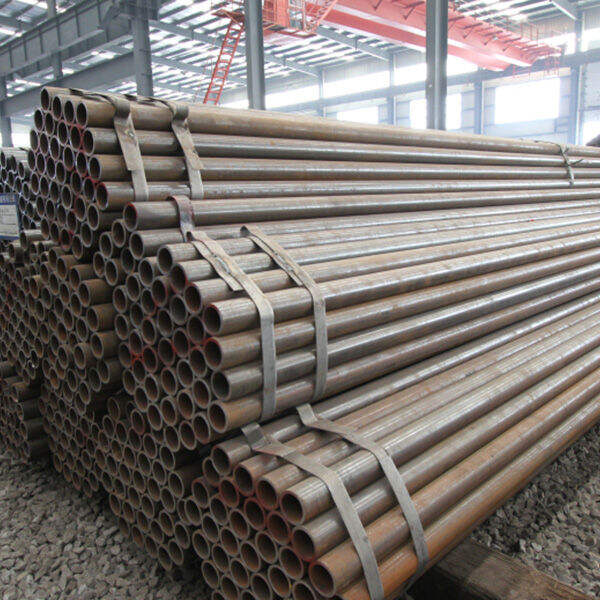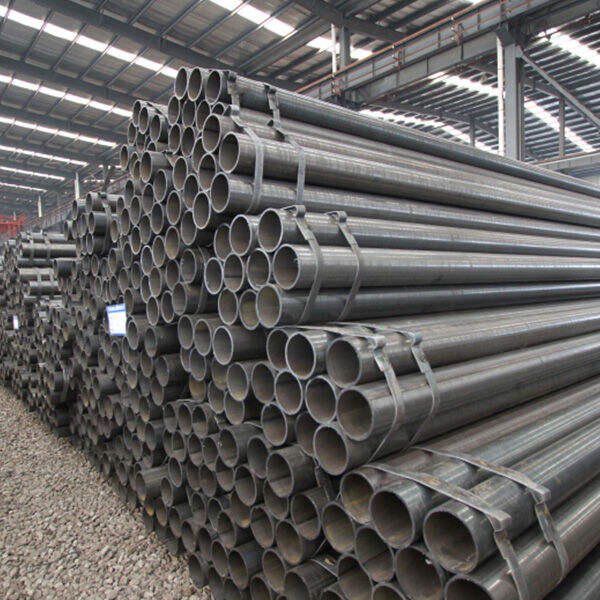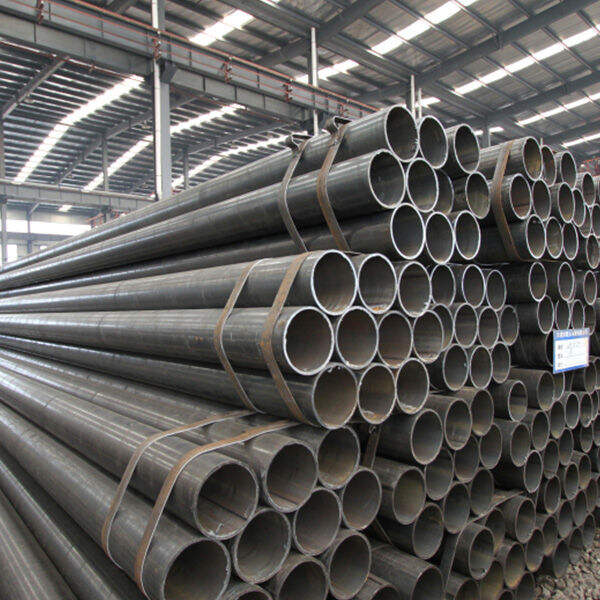Az kirlənli çərəkli burchaklar, yalnız az mədərəli alüyuma daxildir. Belə çərəklilər əksər hallarda inkişaf etdirilən məhsulların qurulması üçün istifadə olunur, çünki onların bir çox pozitiv xüsusiyyətləri var ki, bu da onları sevimlilər edir. Bu, insanlar az kirlənli çərəkli çələk nəzərdə tutmaq üçün yaxşı səbəbdir- ümumiyyətlə bu, hazırlamağın ucuz olması deməkdir. Bu da, bu növ metali istifadə edən tikintiçilər və şirkətlər üçün pul save etməsinə səbəb olur. Bu, sadəcə güclü material deyil; az kirlənli çələk uzun ömürlülükdən də ehtiyac duyur ki, bu da onu burchaklar üçün ideal edir. İstehsalçılar demiri digər metallərlə birləşdirib, sonra onu istilik və soyudma prosesindən keçirib bu növ metali hazırlayır. Bu prosesin zamanı, metal özü bizi tələbimizə uyğun burchaklara çevrilir.
Azbonli çəliss, borular üçün müthiş bir seçimdir və burada bunun nəsə səbəbləri var. Bu, bir neçə sıvıda istifadə edilə bilən dayanıqlılıq göstərir və hal-hazırda su və ya benzinü gətirən məqsədlərə görə istifadə olunduğunu görürük (məsələn). Hər hansı rust və kəsrə qarşı tamamilə dəyən deyil, lakin material, ildələr və ya onilliklər boyunca dayanacaq borularda bir çox növənə qarşı yaxşı işləyir. Bu da uzun müddətli təmir və ya əvəz edilmədən pul xoşlaşdırmağınıza səbəb olur. Ucuz bonlu çəlisdən daha yumşaq olmasının yanı sıra, azbonlu çəlislər inşaçılar üçün bir başqa azbonlu çəliss hissəsini öyrənmək asandır. Bu da böyük boru sərhədlərini birgə qoymaq və yaradmaq üçün çox daha az çəngə malikdir. Məsafələrlə bağlı olaraq, azbonlu çəliss həm də hafifdir və inşaat layihələrində istifadə edilə bilən və daha effektivdir.

Az karbonlu çərəzli burchaklar uzun müddət istifadə edilə biləcəyi üçün yaxşı qorunmalıdır. Bu, sadəcə burchakları təmiz və çökmədən azad saxlayaraq edilə bilər. Daha da faydalı olaraq, burchakları dəmiri hasar, rüstə və ya istifadə nəticəsində olan problemlər üçün dövlətdən-dövlət qeyd etmək gəlməlidir. Ən vacib şəy isə, əvvəllər bir şey səhv olduysa — onu çox pis olmaqdan əvvəl düzəldə bilərsiniz. Bu burchakları ya da rüstəni dayandıran xüsusi köçə ilə sürətli olaraq yağılıya vurun. Bu köç rüstənin formasını dayandırmaq üçün zırhlığı kimi işləyir və bununla da duvarlarınız su və ya digər elementlərdən korunur. Son olaraq, bu burchakların işlənməsi ehtiyac duyarsa uyğun alətlərdən istifadə etməyə diqqət yetirin, aksi halda bu məscuları lüzumsuz zədələndirməyə səbəb olacaqsınız. İşin keyfiyyəti, doğru alətlərin varlığından asılı olaraq böyük dərəcədə yaxşılaşa bilər.

Azotli çərəzli dəmir ənillərinin ölçüsünü və qalınlığını seçməkdə nəzərə almalıyıq bir neçə əsas faktor var. Birinci olaraq, ənillərdən necə miqdarda sıvı keçəcəyini tapmaq lazımdır. Bu məlumat ənillərin necə ölçülü olması ehtiyacını müəyyənləşdirmək üçün xüsusilə lazımdır. Aydin olar ki, ənillər çox kiçik olsa da ya bloklaşıb, ya da basınc altında sütunları açılır. Ənillər altındakı basınc da əksərən üzlərinizdən keçməlidir. Bu faktor ənillərin necə qalın olması ehtiyacı ilə bağlıdır, çünki daha qalın ənillər daha yüksək miqdarda basıncı dəstəklə bilərlər. Ənillərin ölçüsü və qalınlığı, yerli məzmun ilə uyğunlaşdırılırsa da vacibdir. Xüsusi bölgülər inşa edilmənin təhlükəsizlik və güvəndirlək məqsədləri üçün öz standartları və təcrübələrini təqdim edirlər.

Az karbonlu çelik, borular üçün seçilmiş materialdır, lakin bir neçə digər material da istifadə edilə bilər. Digər ümumiləşmiş materiallar stainless çelik və mədənət əhatədə daxildir. Stainless çelik — Bu material, az karbonlu çelikdən daha çox koroziya və rüzgar qarşı koymağında üstün olmasına baxmayaraq, daha yüksək qiymətlidir. Mədənət oksidasiyaya qarşı dayanıqlıdır, amma bu hala stainless çelikdən daha pahalı variantdır. Bu materiallar, görkəm növbəti ilə əlaqələndiyində, məsələn parlatılmış səthləri ilə həmişə cümləyə yaxşı gələn mərtəbəli evdəki dolablar və su musluğu kimi yerlərdə axtarılır.不锈钢 çelik və mədənət elə də faydalarına malikdir, amma az karbonlu çelik hələ də güclü və qiymət nəzərə alınanda fabrikatçıların ən yaxşı seçimidir. Bu onu müxtəlif inşaat layihələri üçün çoxsaylı bir seçimdə edir.